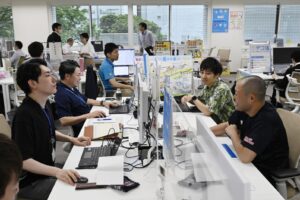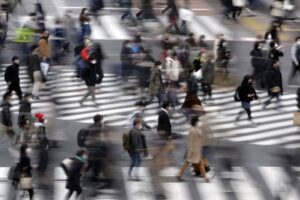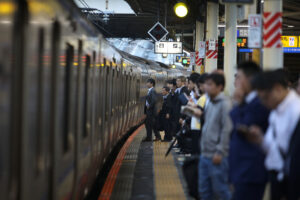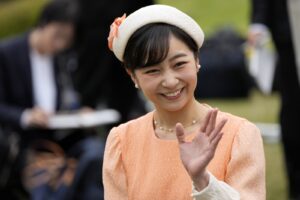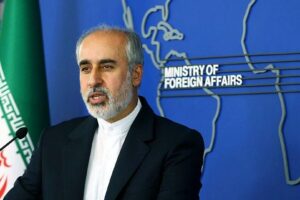Tokyo, 12 March, /AJMEDIA/
TOKYO -Japan will ease its anti-coronavirus masking directives on March 13, making it a date when each of us will have to think about what we will do with our own masks.
Prime Minister Fumio Kishida told a press conference, “I’ll have more chances to spend time without a mask.” Osaka Gov. Hirofumi Yoshimura said, “Basically, I’m going to remove it (my mask), but it’ll be a case-by-case thing.”
But what do the people think of masking? One hairdresser told the Mainichi Shimbun recently, “I think I’ll keep wearing it for a while to make my customers comfortable.” A health ministry executive, meanwhile, said they would “basically stop wearing a mask,” but that they “have hay fever, so it will depend on the pollen situation.”
And this reporter’s friend’s son, who will be starting junior high school in April, said he is determined to be “the very last one wearing a mask,” because “that’s better for not catching it (COVID-19), right?”
The coronavirus will not disappear. Wearing a mask does do something to prevent transmissions, and many people know that. On the other hand, a nationwide Mainichi Shimbun poll conducted in mid-February showed that 49% of respondents wanted to “take off masks in more situations,” and 44% wanted to “continue wearing masks.”
How will Japan’s ‘mask landscape’ change after March 13? Kazuya Nakayachi, a social psychology professor at Doshisha University in Kyoto Prefecture, says that “trend” and “prevalence” hold the key to understanding what will happen. Social practices begin with just a handful of “innovators,” uninfluenced by anyone else and acting on their own beliefs. Then come the “early adopters,” or those who don’t want to be the only one doing something, but are willing to try with a small number of others. As these people’s numbers increase, they draw in more “followers” who go with the trend.
In keeping with this model, Nakayachi believes that only a small minority of people will adopt the “no mask” policy immediately after March 13. For a while, he speculates, the ranks of the maskless will grow only slightly, but when the number gradually increases from 1 or 2 out of 100 to 10 or 30, “the chain reaction will probably cause people to remove their masks all at once.”
The reason for this is that when people think of wearing masks, in addition to “preventing infection,” they are also strongly motivated by a sense of “alignment” with others. In an internet survey of 1,000 people in Japan conducted by Nakayachi in March 2020, the most common reason given for wearing masks was “alignment,” far exceeding “infection prevention” for oneself or others.
The difference between now and then is that in March 2020, Japan was just entering the pandemic, whereas in March 2023 the country is plotting its way out of it. However, Nakayachi pointed out, “It’s in our nature as social animals to watch what others are doing. Things won’t change even after three years.” He also noted, “This tendency is often seen as peculiar to the Japanese people, but this is not necessarily true.”
For example, during the 2020 U.S. presidential election, many supporters of then President Donald Trump were opposed to mask-wearing as a symbol of government meddling, and there was peer pressure to agree that “no masking” was right. In the United States, “there was strong alignment along party political lines that don’t exist in Japan,” said Nakayachi, adding that the tendency to conform is a habit shared by all humankind regardless of national characteristics.
Around this time in 2021, U.S. states successively eliminated masking requirements as infections with the coronavirus’s omicron variant subsided. In particular, “unmasking” is said to have progressed rapidly in states with strong conservative factions.
The Washington Post news website reported at the time that peer pressure was leading to the end of masking in schools. One mother told the paper that her high schooler son was harassed for wearing a mask by macho, Trump-supporting boys in his class, and decided not to wear one to avoid the bullying.
When rules that used to encourage uniform behavior are eliminated, “majority” and “minority” groups are created, said Nakayachi, and peer pressure and the accompanying squabbles are more likely to occur. Especially Japan’s children, who are easily influenced by their surroundings, may find themselves in more difficult situations than adults.
How should we deal with this situation? In the U.S., which was early to ease mask-wearing rules, many psychologists recommend dialogue between parents and children and that they try role-playing to simulate conversations with friends. To avoid friction at school, Nakayachi said these interactions can also be used to inform children that people’s masking decisions may depend on their individual situations, such as frail health or living with grandparents.
Although this advice is for children, this reporter feels that us adults can use some of it as well. We should improve our ability to deal with our daily lives in a post-March 13 Japan, where some people will keep wearing masks while others will not.





